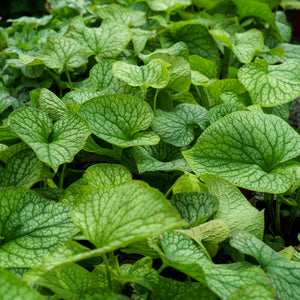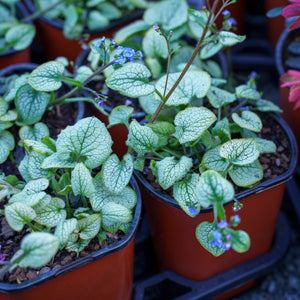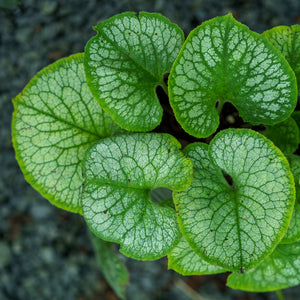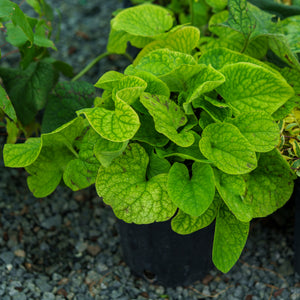The Brunnera Guide
Brunnera, also known as Siberian Bugloss or False Forget-Me-Not, brings a touch of woodland charm and delicate beauty to any garden landscape. With its heart-shaped leaves and dainty blue flowers, Brunnera plants are perfect for adding texture and color to shaded borders, garden beds, and woodland gardens. These plants are admired for their ability to thrive in shady conditions and their minimal maintenance requirements. Whether you're aiming to enhance your shade garden, create a serene display, or add a unique element to your space, Brunnera offers a captivating and versatile solution. Explore our Brunnera Guide to learn more about cultivating and caring for these charming plants, and discover how to incorporate them into your garden for lasting beauty and enjoyment.
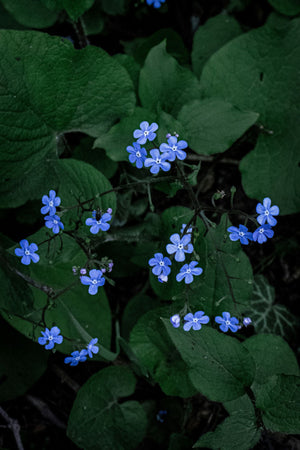
About Brunnera
Brunnera is a genus of flowering plants in the Boraginaceae family, comprising about three species. These plants are native to woodlands and meadows in Eastern Europe and Asia, particularly Siberia. The name "Brunnera" honors the Swiss botanist Samuel Brunner, who contributed significantly to the study of the genus. Brunnera plants are characterized by their clusters of small, bright blue, star-like flowers that bloom in the spring, resembling those of Forget-Me-Nots. The foliage is equally attractive, with large, heart-shaped leaves that are often variegated with silver or white markings, adding a striking contrast to the garden.
Some popular species and varieties of Brunnera include Brunnera macrophylla (Siberian Bugloss), Brunnera macrophylla ‘Jack Frost,’ known for its silver foliage with green veins, and Brunnera macrophylla ‘Alexander’s Great,’ which features larger leaves and an impressive form. Each species and variety has its unique characteristics, but all share the common traits of beautiful flowers and attractive foliage.
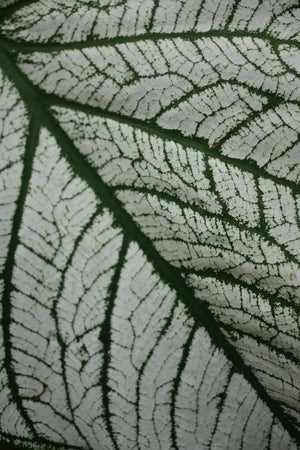
Planting Brunnera
Brunnera plants require specific planting conditions to ensure their successful establishment and flourishing growth. Here are some essential guidelines for planting and caring for Brunnera:
Soil: Brunnera prefers rich, well-draining soil that retains moisture. A loamy or sandy soil amended with organic matter such as compost works best. Ensure the planting site is free from heavy clay or waterlogged conditions, which can cause root rot.
Light: Brunnera thrives in partial to full shade. Choose a location with dappled sunlight or filtered shade for optimal growth. In hotter climates, provide more shade to protect the plants from intense heat and sunlight.
Watering: Brunnera requires regular watering to keep the soil consistently moist but not waterlogged. Water the plants deeply, allowing the top inch of soil to dry out between waterings. During hot, dry periods, increase the frequency of watering to maintain soil moisture.
Planting Depth: Plant Brunnera at the same depth as it was growing in its pot or nursery container. Space the plants 12-18 inches apart to allow for proper air circulation and growth. When planting in the ground, dig a hole twice as wide and the same depth as the root ball to encourage root spread.
Mulching: Apply a layer of organic mulch, such as compost or shredded leaves, around the base of the plants to retain moisture, suppress weeds, and regulate soil temperature. Avoid covering the crowns directly, as this can lead to rot.
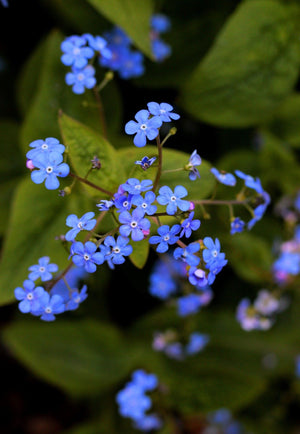
Care for Brunnera
Brunnera plants require specific care to ensure their optimal growth and health. Here are some general guidelines for the care of Brunnera:
Watering: Keep the soil consistently moist during the growing season but avoid waterlogging. Water the plants deeply, allowing the top inch of soil to dry out between waterings. During hot, dry periods, increase the frequency of watering to maintain soil moisture.
Fertilizing: Brunnera benefits from a balanced, slow-release fertilizer applied in the spring as the plants begin to grow. Follow the recommended dosage on the product label. Avoid over-fertilizing, as this can lead to excessive foliage growth at the expense of flowers.
Pruning: Remove spent flower stalks after blooming to encourage the plant to direct its energy toward new growth and foliage. Trim back any damaged or dead leaves to maintain a tidy appearance. Pruning is best done in late spring or early summer after the flowering period.
Pests and Diseases: Brunnera is relatively pest-resistant but can be susceptible to issues such as powdery mildew and slugs. Inspect your plants regularly and treat any infestations promptly with appropriate organic or chemical controls. Maintain proper spacing and air circulation to reduce the risk of diseases.
Dividing: Brunnera plants can become crowded over time. Divide and replant the clumps every 3-4 years to maintain healthy growth and prolific blooming. The best time to divide Brunnera is in the spring before new growth begins or in the fall after flowering.
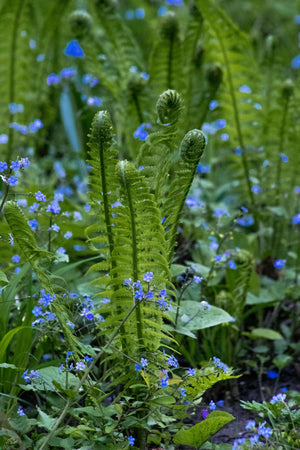
How to Use Brunnera
Brunnera offers versatility and can be utilized in various ways to enhance your garden spaces. Here are some recommendations based on their characteristics:
Shade Gardens: Brunnera’s ability to thrive in partial to full shade makes it an ideal choice for shade gardens. Plant them under trees or along shaded pathways to create a lush, woodland feel.
Borders and Beds: Brunnera’s attractive foliage and delicate flowers make them perfect for adding color and texture to garden borders and flower beds. Plant them in clusters or drifts for a dramatic display of color and form.
Ground Cover: In shaded areas, Brunnera can be used as an effective ground cover to fill large spaces with lush foliage and seasonal blooms. Their dense growth helps suppress weeds and retain soil moisture.
Containers: Brunnera can be grown in containers, making them a versatile choice for patios, balconies, or small gardens. Choose a large container with good drainage and place it in a shaded spot to enjoy the plants up close.
Woodland Gardens: Incorporate Brunnera into woodland gardens to enhance the naturalistic, wild look. Plant them alongside other shade-loving plants like ferns, hostas, and astilbes to create a harmonious, low-maintenance landscape.
Cut Flower Arrangements: Brunnera blooms can be used in cut flower arrangements. Harvest the flowers when they are fully open and use them in bouquets or floral displays to bring the beauty of the garden indoors.
Conclusion
Brunnera is a captivating and versatile addition to any garden landscape. With their delicate blue flowers, attractive foliage, and minimal maintenance requirements, Brunnera plants bring a touch of woodland charm and elegance to your environment. Their adaptability to various growing conditions and ease of care make them a favorite among gardeners of all levels. By following proper planting and maintenance techniques, you can fully harness the potential of Brunnera to enhance your garden, creating a lasting impact.
Whether you seek to create stunning shade gardens, add visual interest to borders and beds, or enjoy their beauty in containers, Brunnera can fulfill a variety of roles in your landscape design. Place them individually to highlight their unique blooms and foliage, or combine different species and varieties for a dynamic and visually appealing display. Brunnera’s resilience and adaptability also make them ideal for ground covers and woodland gardens.
Beyond their ornamental value, Brunnera plants contribute to the overall beauty and charm of your garden ecosystem. With their enduring beauty, versatility, and ecological significance, Brunnera plants bring delight and natural allure to your outdoor environment, enriching your gardening experience and enhancing the overall beauty of your landscape.

